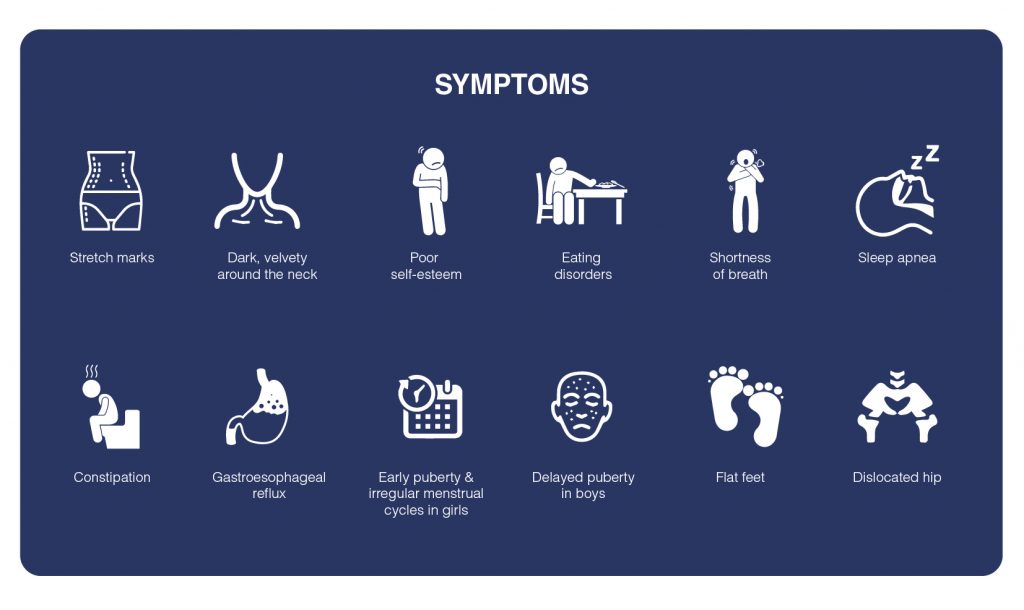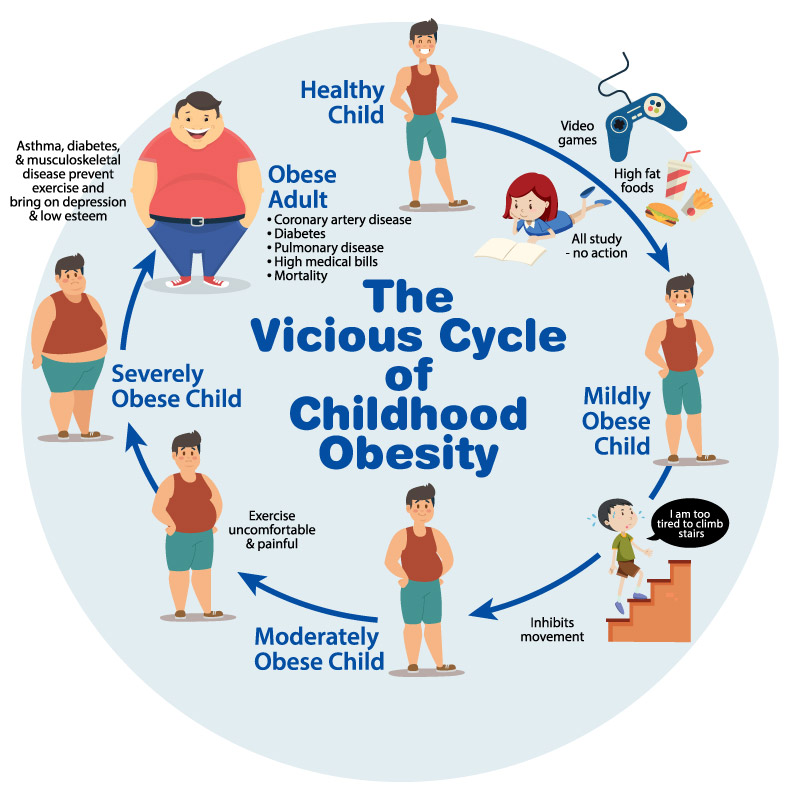What Are Common Symptoms Of Obesity In Children
As a society, it is important for us to recognize the alarming concerns surrounding childhood obesity. This health issue is more than just about appearances – it has the potential to shorten a child’s lifespan. In our upcoming article “What are Common Symptoms of Obesity in Children”, we’ll outline the most common symptoms and signs of obesity in youngsters. Comprehending these early signs offers a chance to prevent it from developing further by enabling critical interventions and treatment. Understanding is the first step towards action.
:max_bytes(150000):strip_icc()/obesity-signs-symptoms-and-complications-4689168-v1-f9b474a31054404bb2307b221303c9e9.png)
Defining Obesity
In our society, discussions surrounding our health are becoming increasingly important. Among these vital discussions, one topic stands out – obesity.
Description of obesity
Obesity is a condition where a person carries an excessive amount of body fat that leads to a significant negative impact on their health. It’s not just about aesthetics or how someone might look; obesity is about our health. Our bodies are designed to carry a certain amount of weight and fat, but when we surpass that limit, it places undue stress on the body.
Scientific classification of obesity
Obesity is scientifically classified by the Body Mass Index (BMI). This is a measure based on a person’s height and weight. An individual is categorized as obese if their BMI is at or above the 30 mark. Our focus today is specifically on childhood obesity – but understanding the general context is key.
How obesity differs from overweight
Many people use the terms “obese” and “overweight” interchangeably, however, they mean different things. Overweight means that an individual weighs more than what is typically considered healthy for their height, but obesity is having an excess amount of body fat. Overweight is defined as a BMI between 25 and 29.9. While both conditions pose risks to health, the risks increase as we move from being overweight to obese.
Understanding Childhood Obesity
Child obesity is an alarming issue that has been rapidly increasing globally over the past few decades.
The prevalence of childhood obesity
Across the globe, the prevalence of childhood obesity is increasing at an alarming rate. On average, one in every five children is suffering from obesity. It is no longer a problem confined to high income countries or urban areas, but is now seen across all socioeconomic groups, urban and rural areas, and in low and middle-income countries too.
Why children are at risk
Children are at risk of becoming obese for a variety of reasons, including consuming high-calorie, low-nutrient foods and beverages, a lack of physical activity, sedentary behaviors, and a lack of sleep. These behaviors may be influenced by the environment and society surrounding a child, such as family eating and exercise habits, as well as the availability and accessibility of healthy food and safe areas to play.
Consequences of childhood obesity
The consequences of childhood obesity can be severe. Children who are obese are at a higher risk for numerous health problems, including heart disease, diabetes, high blood pressure, and even early death. Additionally, obese children are more likely to become obese adults, and adult obesity is associated with a number of serious health conditions.
Physical Symptoms of Childhood Obesity
Increased weight compared to peers
One of the most obvious signs of childhood obesity is an increased weight compared to other children of the same age and gender.
Unusual fatigue during physical activity
Another common physical symptom is unusual fatigue during physical activity. Obese children may struggle to keep up with their peers during games or sports, or even become fatigued during normal daily activities, such as walking to school.
Shortness of breath
Shortness of breath can also be a sign of childhood obesity. This occurs because the excess weight places added stress on the cardiovascular system, making it harder for the lungs and heart to provide the body with oxygen.
Early puberty in girls
Child obesity may lead to early onset of puberty, particularly in girls. This is due to the excess fat triggering the body to produce hormones earlier than usual.
Increased appetite
Another physical symptom is an increased appetite. This can be both a cause and effect of childhood obesity, as high-caloric diets can lead to weight gain, and those who are overweight or obese may eat more to fulfil mental rather than physical hunger.
Psychological Symptoms of Childhood Obesity
Childhood obesity isn’t just physical. Emotional and psychological implications also come into play.
Lower self-esteem
Many obese children struggle with lower self-esteem, which can stem from bullying or societal pressure to conform to a certain body image.
Increased incidents of bullying
Children who are overweight or obese often suffer from increased incidents of bullying, both in-person and online, which can lead to social isolation and emotional distress.
Social withdrawal and isolation
Obese children often experience social withdrawal and isolation, perhaps as a result of feeling different from their peers or due to bullying.
Depression or anxiety
Depression or anxiety can often emerge as a psychological symptom of childhood obesity. These children are more likely to experience symptoms of anxiety and depression than their peers.

Behavioral Symptoms of Childhood Obesity
Frequent eating out of boredom or stress
A behavioral symptom of obesity includes eating frequently out of boredom or stress rather than eating out of hunger.
Very sedentary lifestyle
Living a sedentary lifestyle with minimal physical activity is another common behavioral symptom.
Preference for high-calorie, low-nutrient foods
Additionally, favoring high-calorie, low-nutrient foods over healthier alternatives is a behavioral pattern that could contribute to obesity.
Problems sleeping
Sleep issues, such as trouble falling asleep or staying asleep, are also common. Sleep disorders have been linked to weight gain and obesity.
Health-related Indicators of Childhood Obesity
Frequent heartburn or acid reflux
Physical health problems can also indicate obesity, such as frequent heartburn or acid reflux.
Early signs of type 2 diabetes
obesity puts children at risk of developing early signs of type 2 diabetes. These signs may include frequent urination, excessive thirst, and unexplained weight loss.
Lipid abnormalities
Abnormal levels of cholesterol or triglycerides in the blood, known as lipid abnormalities, can be a sign of obesity.
High blood pressure
Also, obese children are more likely to have high blood pressure which can result in damage to their heart.
Joint pain or difficulty with physical functioning
Furthermore, joint pain or difficulty with physical functioning can be symptoms of childhood obesity, due to the excessive strain the extra weight places on the body.

Conditions Associated with Childhood Obesity
Asthma
Childhood obesity raises the risk of many health problems, including asthma. The extra weight can make it harder for these children to breathe.
Sleep apnea
Sleep apnea, a serious sleep disorder where breathing stops and starts, is another condition linked with childhood obesity.
Non-alcoholic fatty liver disease
Non-alcoholic fatty liver disease is also associated with obesity. This disease results in fatty buildup in the liver that can potentially lead to liver damage or failure.
Insulin resistance or diabetes
Insulin resistance or diabetes, where the body doesn’t properly use insulin, is a common condition associated with obesity, since excess weight impacts our body’s ability to control blood sugar.
Hypertension
Childhood obesity can lead to hypertension, or high blood pressure, which puts strain on the heart.
Dyslipidemia
Further, obesity may cause dyslipidemia, a condition characterized by elevated levels of lipids or fats in the blood, which can lead to the development of plaques in the arteries.
Metabolic syndrome
Finally, metabolic syndrome, a group of conditions that occur together, including high blood pressure, high blood sugar, and abnormal cholesterol or triglyceride levels, is also associated with obesity.
Importance of Early Detection and Intervention
The role of regular pediatric checkups in early detection
Addressing obesity in children is crucial, and the first step is early detection. Regular pediatric checkups allow doctors to monitor growth patterns and identify if a child is gaining weight too quickly, taking into account their age, sex, and height.
The importance of nutrition and fitness education
Alongside early detection, it’s absolutely essential to educate children about nutrition and fitness. Teaching kids about the importance of a balanced diet and regular physical activity can help them make healthier choices.
Benefits of family involvement in healthful lifestyle changes
Family involvement also plays a key role in combating childhood obesity. When the entire family adopts healthy habits, it’s more likely that the child will also. This not only helps with weight management but also promotes a healthier lifestyle overall.

Preventing Childhood Obesity
Healthy eating habits
Healthy eating habits are pivotal to curbing childhood obesity. Eating a balanced diet rich in fruits, vegetables, whole grains, lean proteins, and dairy products, and avoiding unhealthy foods, can significantly trim excessive weight gain.
Physical activity and limit screen time
Encouraging children to engage in physical activity regularly and limiting screen time can also prevent obesity. The aim is to incite a lifestyle that finds joy in movement and stays away from sedentary activities as much as possible.
Maintaining a support system at home
A strong support system at home, involving parents, siblings, and other family members, can empower the child to stay on track with healthy habits. This should include both emotional support and active participation in modeling healthy behaviors.
Treatment Options for Childhood Obesity
Lifestyle modifications
childhood obesity can be controlled or even reversed through proper lifestyle modifications. This includes strategies such as implementing a healthier diet, increasing physical activity, managing sleep, and reducing screen time.
Behavior therapy
Behavior therapy can also be useful to help children and adolescents make these lifestyle changes. This might include setting achievable goals, learning to self-monitor behaviors, and rewarding progress.
Pharmacological interventions
In more severe cases, healthcare providers may recommend pharmacological interventions. As with adults, these medications work by reducing appetite or increasing feelings of fullness.
Surgical approaches
In certain cases, and when other options have failed, surgical approaches may be considered. These surgeries aim to decrease the size of the stomach or the absorption of calories, and are generally reserved for those with severe obesity or obesity-related health problems.
Community-based interventions
Finally, community-based interventions can be successful in treating and preventing childhood obesity. This approach involves changes in schools and communities to promote healthier eating and physical activity.
Simply put, it’s a shared responsibility to tackle childhood obesity – from individuals, to families, to society as a whole. We need to continue educating ourselves and taking action to ensure all children have the chance at a healthy, fulfilling life. The fight against childhood obesity begins with understanding, compassion, and commitment, and we all play a crucial role in this battle.


